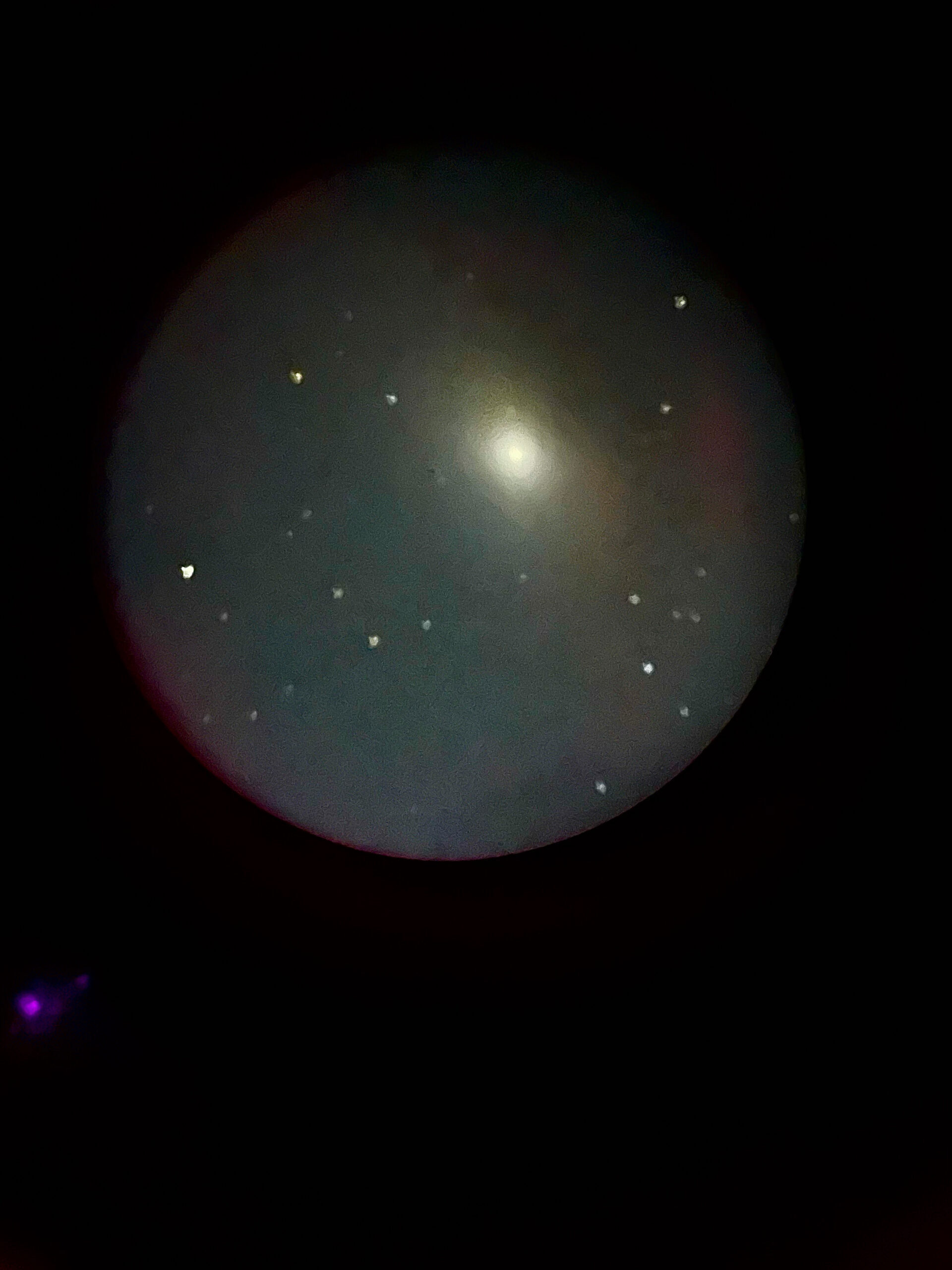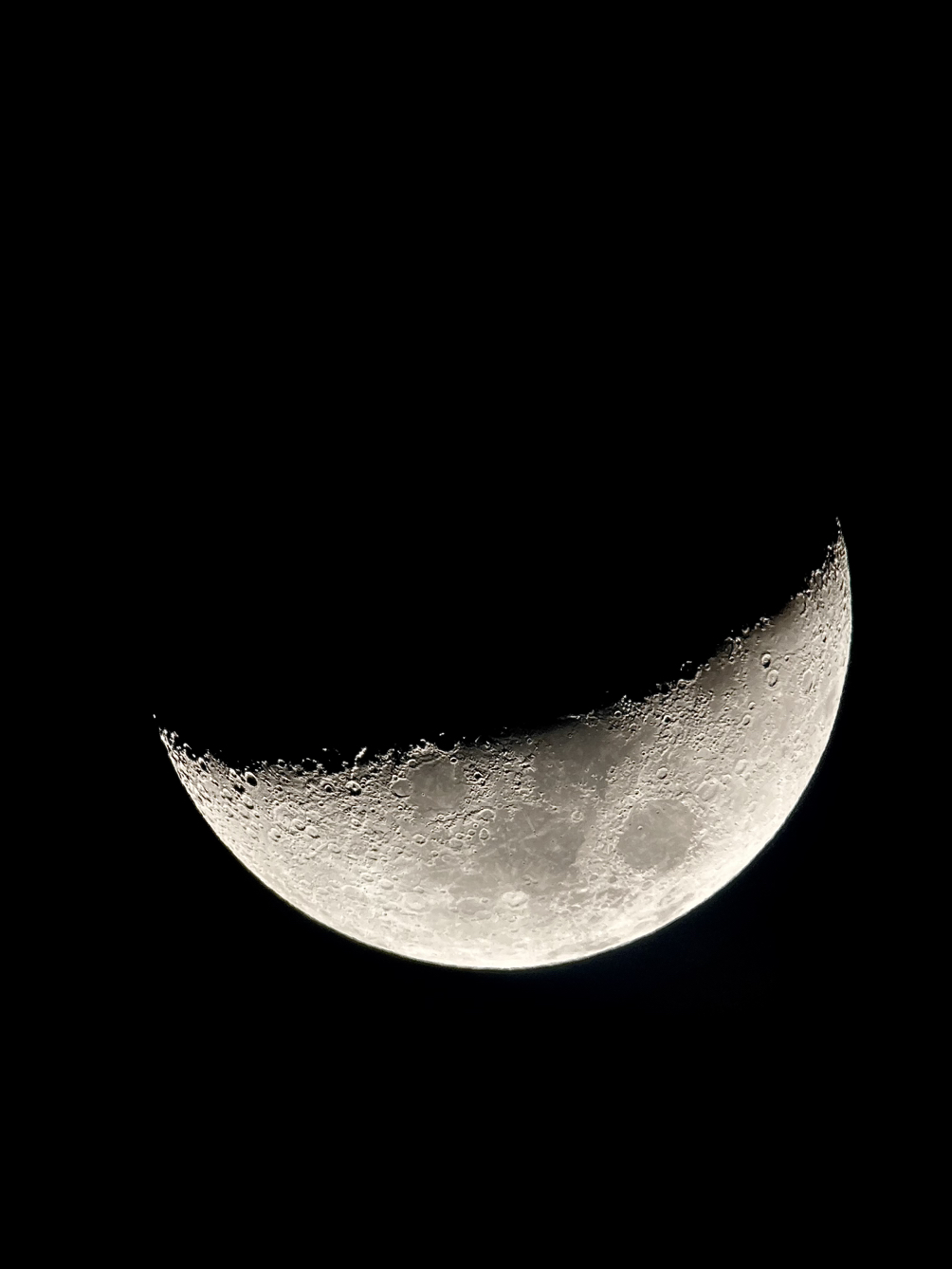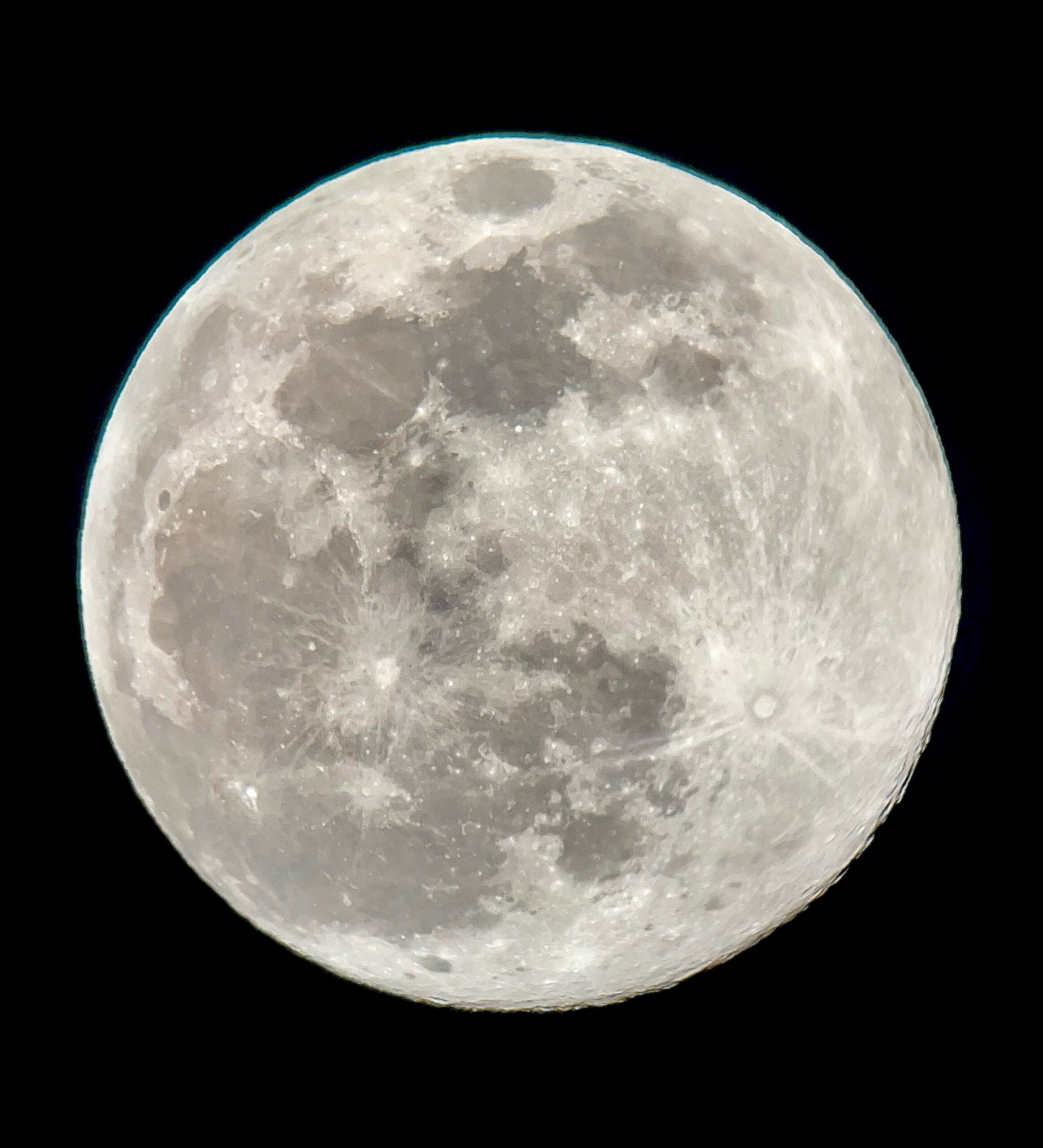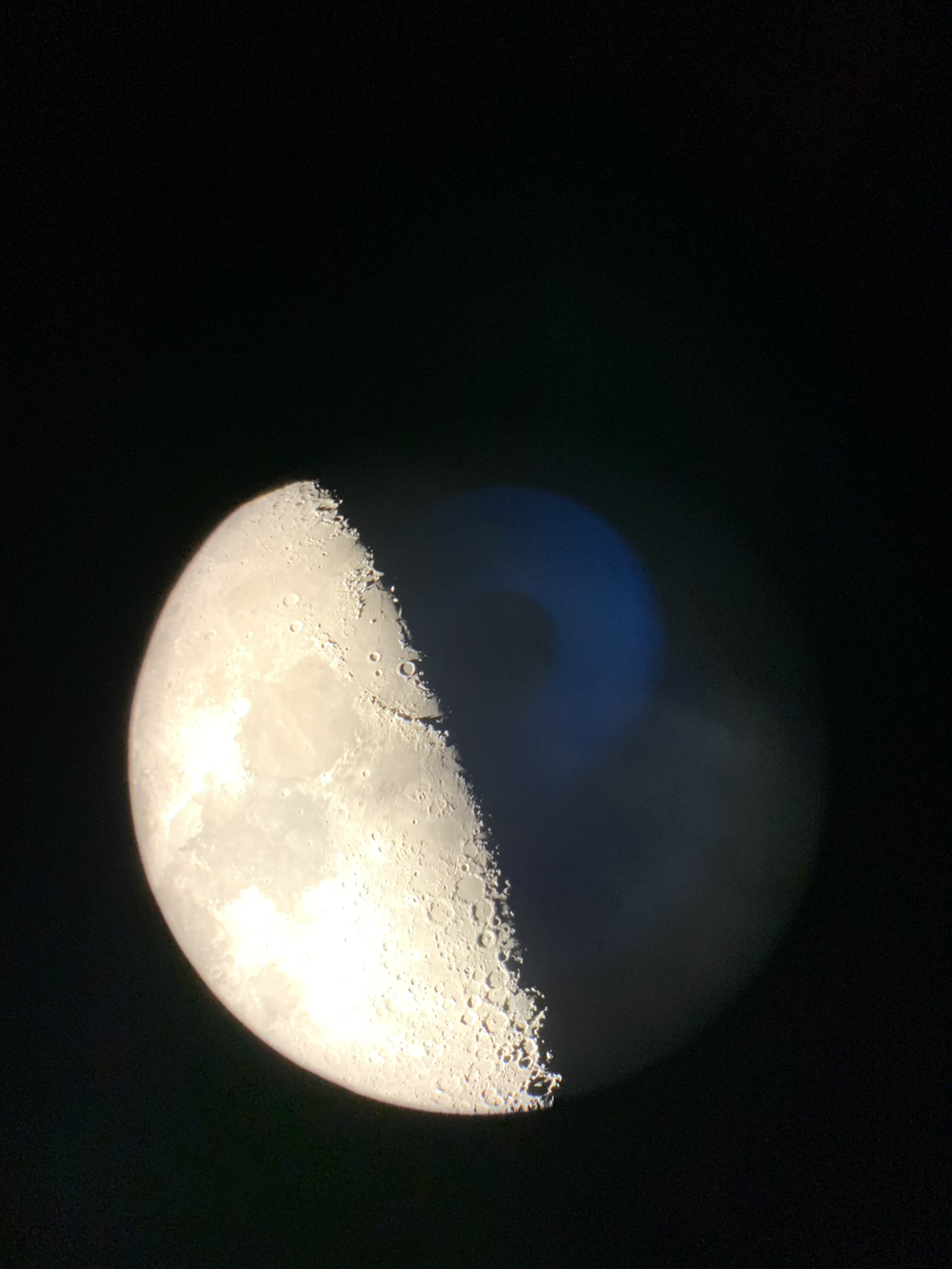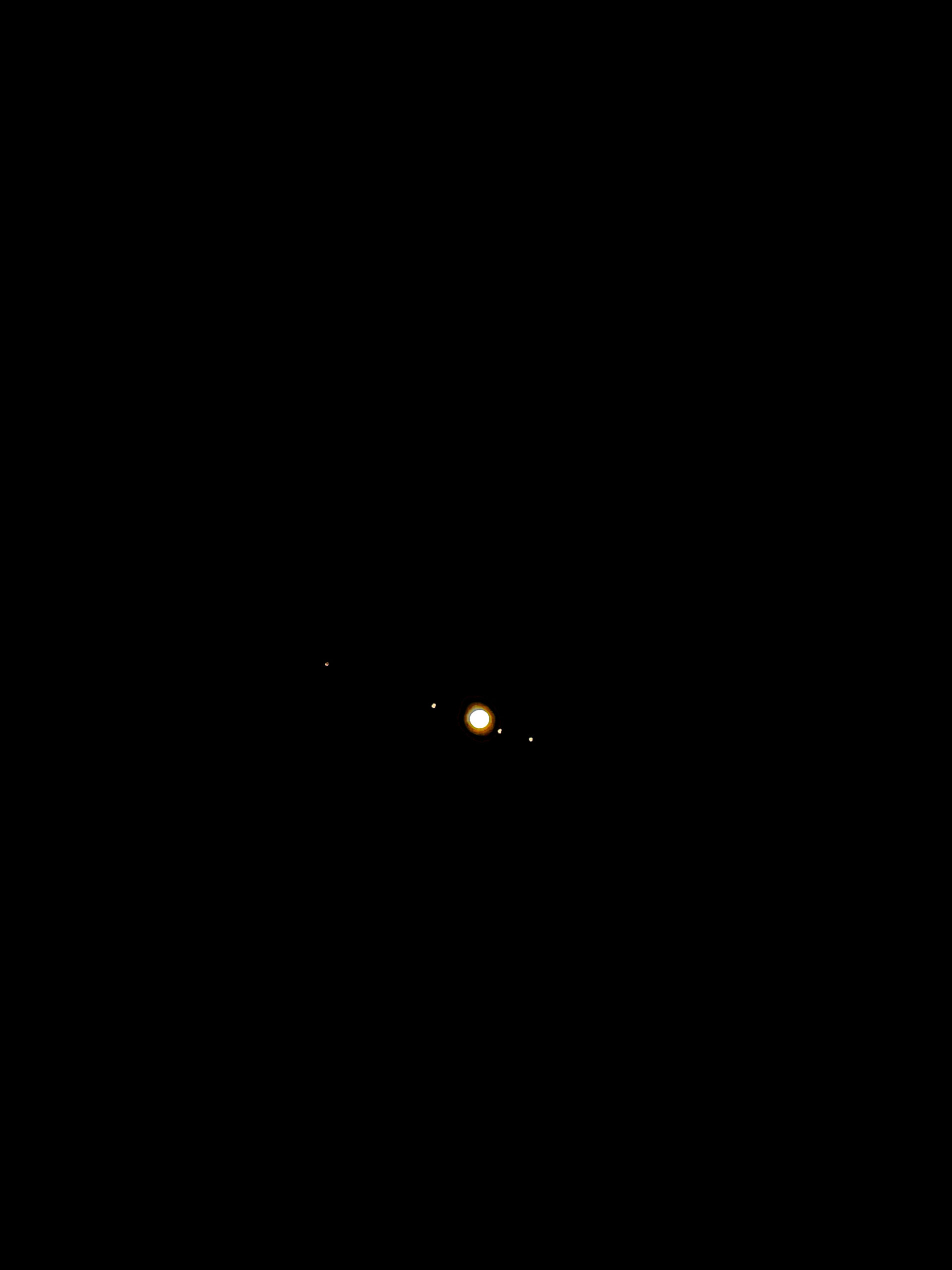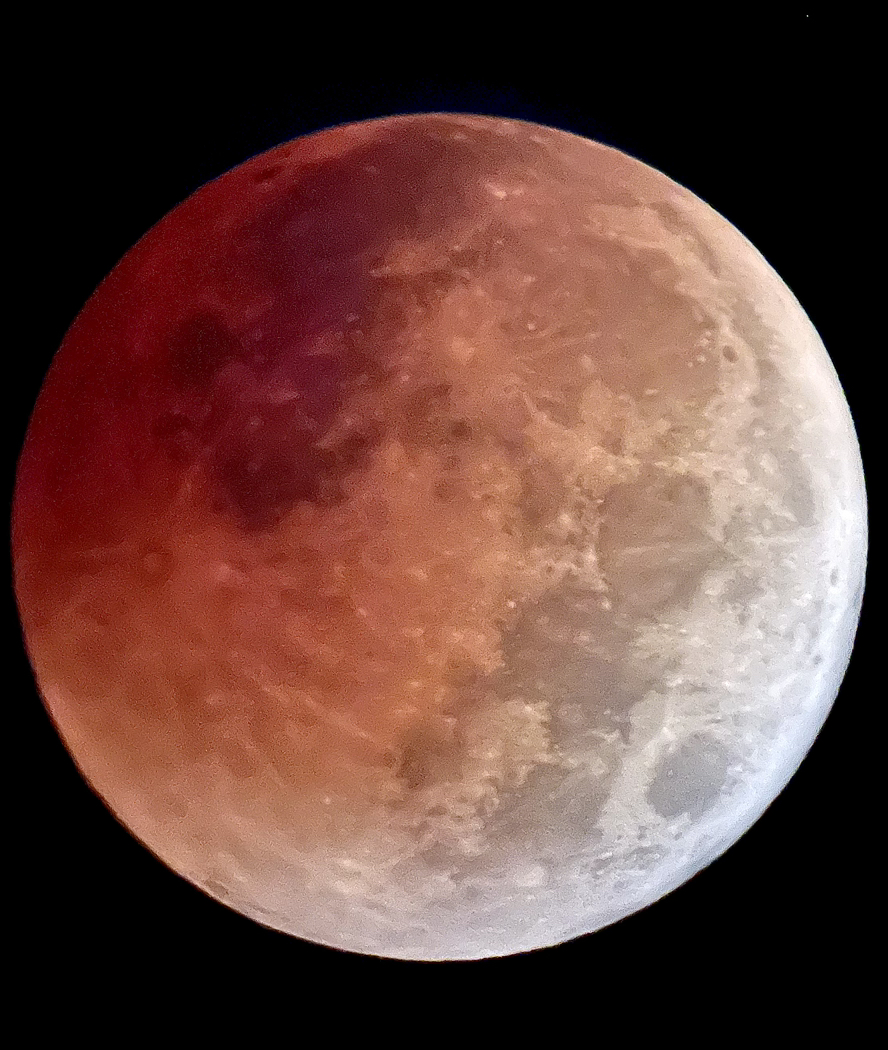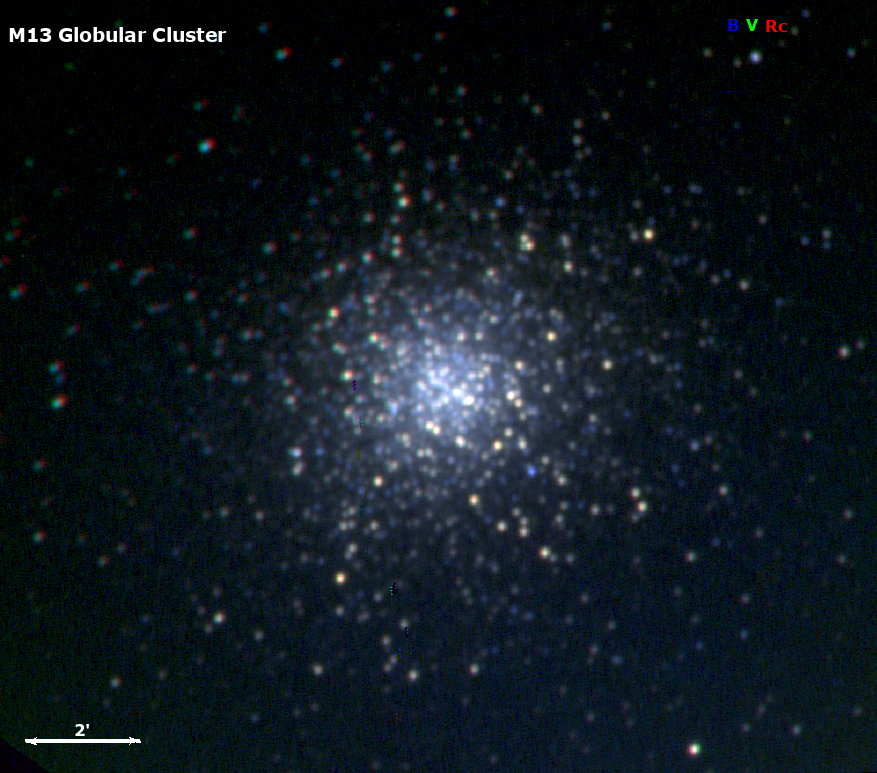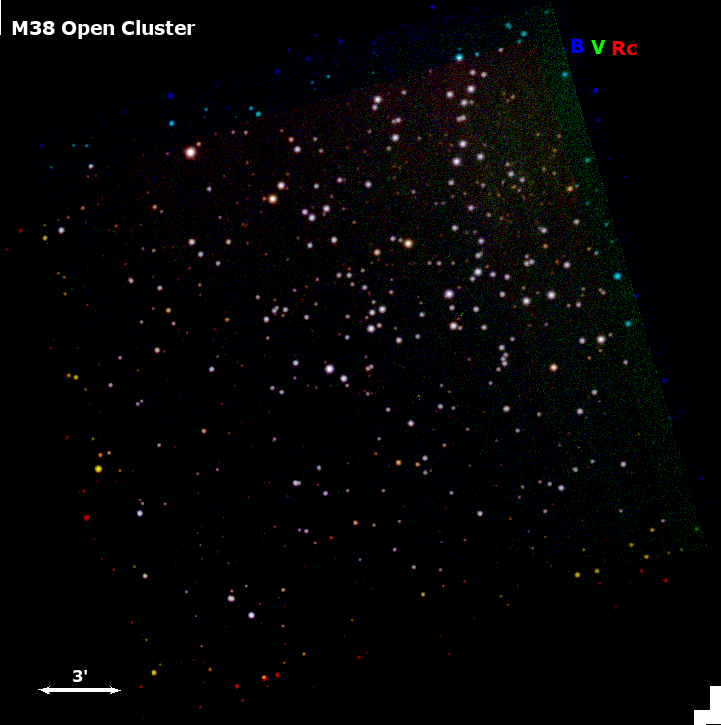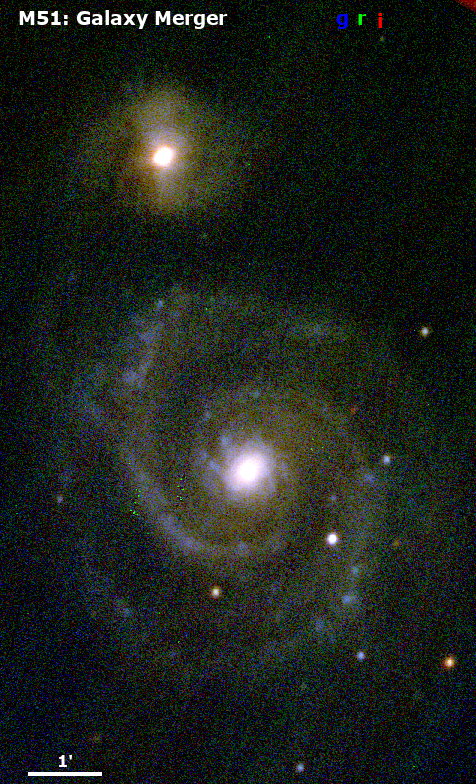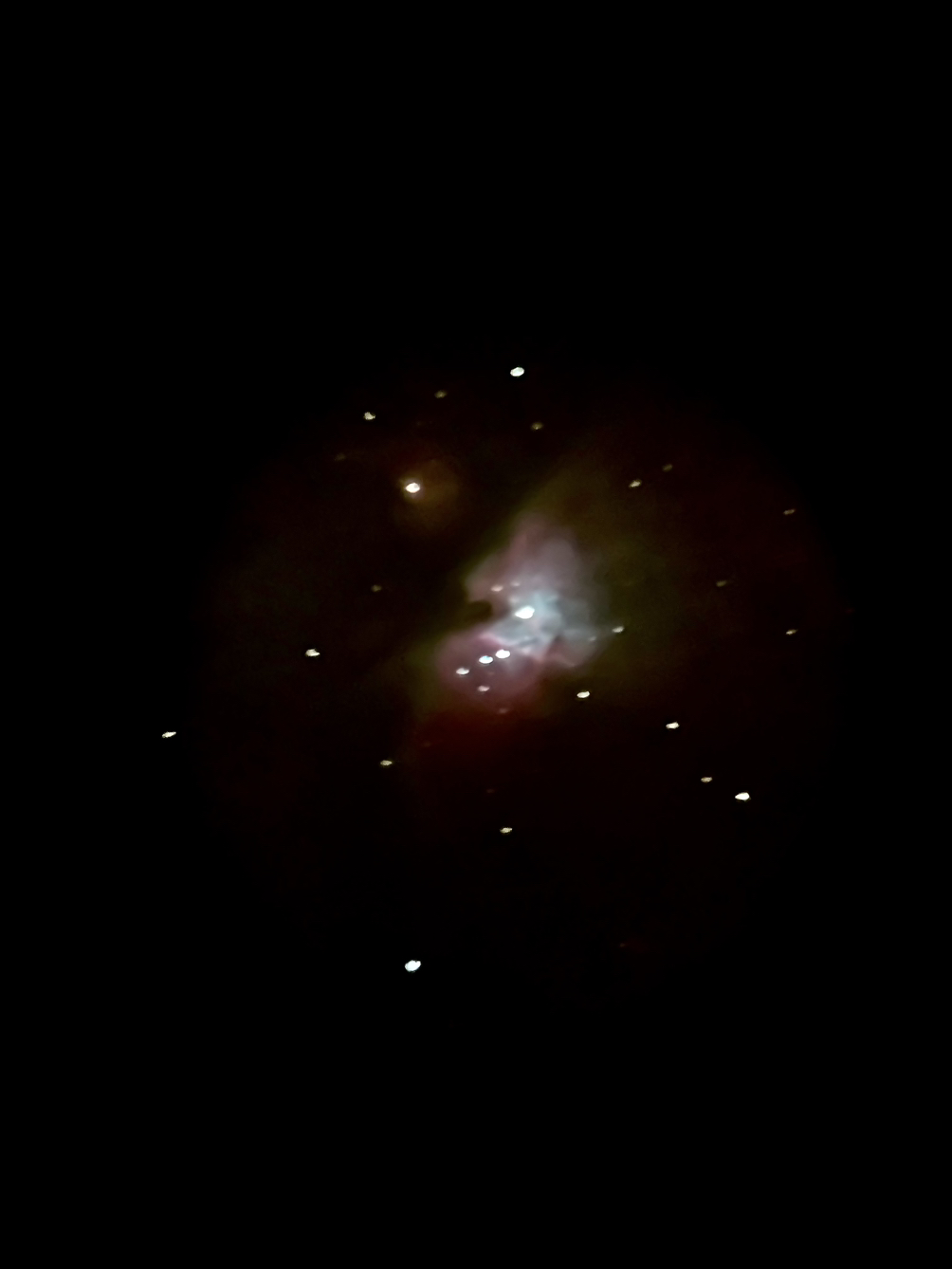Andromeda Galaxy
Earning its name from the constellation it sits behind, the Andromeda Galaxy is roughly 2.5 million lightyears from Earth, making it the closest major galaxy to our Milky Way. The Andromeda and Milky Way galaxies are expected to collide in about 4 billion years. Credit: D. Klunk
Andromeda Galaxy
Crescent Moon
Half of the Moon is always lit by the Sun, but during a crescent Moon, only a small sliver of that half is facing us. Credit: D. Klunk
Crescent Moon
Full Moon
Half of the Moon is always lit by the Sun, but during a Full Moon, that half is facing us! Credit: D. Klunk
Full Moon
Half Moon
Half of the Moon is always lit by the Sun, but during a Half Moon (either First Quarter or Third Quarter), only half of the lit side is facing Earth. Credit: D. Patterson
Half Moon
Jupiter and the Galilean Moons
Although it is 4.2–5.7 million miles from Earth, Jupiter is easy to observe due to its massive size. The planet's four largest moons—Io, Europa, Ganymede, and Callisto—were first observed and documented by Galileo after the invention of the telescope (Hans Lippershey, 1608), giving these satellites the name Galilean Moons. Credit: D. Klunk
Jupiter and the Galilean Moons
Lunar Eclipse
During a Lunar Eclipse, the Earth's shadow falls on the Moon, blocking all sunlight from reaching its surface, but a small fraction of light bends through Earth's atmosphere and around the planet to then land on the Moon. This sunlight has been heavily scattered through the atmosphere (why the sky looks blue), and so mostly only red light remains, giving the Moon its gorgeous blood color. Credit: D. Klunk
Lunar Eclipse
M13: Globular Cluster
The Hercules Globular Cluster (also known as Messier 13 or M13) is a massive cluster of stars roughly 22 thousand lightyears away from Earth. The cluster contains hundreds of thousands of stars and is approximately 11.65 billion years old, which we determine from the most massive stars that have not yet started to die. Globular clusters are larger, more massive, denser, and redder than open clusters like M38. Taken with TCNJ 27".
M13: Globular Cluster
M38: Open Cluster
The Starfish Cluster (also known as Messier 38 or M38) is a massive cluster of stars roughly 3,500 lightyears away from Earth. The cluster contains roughly 100 stars and is relatively young at 390 million years old (Earth and the Solar System are roughly 4.5 billion years old). Open clusters are smaller, less massive, less dense, and bluer than globular clusters like M13. Taken with TCNJ 27".
M38: Open Cluster
M51: Galaxy Merger
Over 20 million lightyears away from Earth, the Whirlpool Galaxy (also known as Messier 51 or M51) and its galactic companion, NGC 5195, are the perfect pair to study galaxy structure and galactic interactions. Taken with TCNJ 27".
M51: Galaxy Merger
Orion Nebula
The pinkish hue of the Orion Nebula comes from hydrogen gas emitting light. This hydrogen gas, along with the other gas and dust that composes the nebula, is actively condensing to form stars, making this nebula one of the most visible and nearby (about 1,300 lightyears from Earth) stellar nurseries. Credit: D. Klunk
Orion Nebula
Contact
Physics Department
Science Complex, Room P401a
The College of New Jersey
P.O. Box 7718
2000 Pennington Rd.
Ewing, NJ 08628

